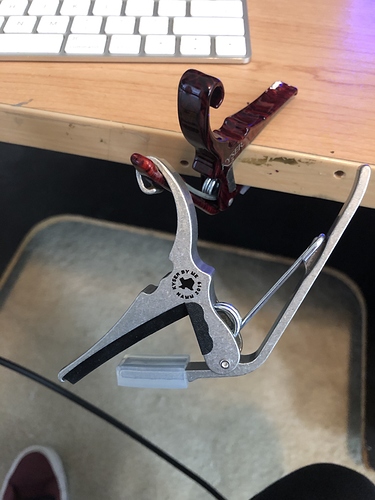Hi! Thanks for posting, and apologies for missing this earlier. And apologies for the trouble in learning this. You bought our stuff three years ago and nobody should still be confused about basic scale patterns after that much time. This is all entirely on us. You’re making motions that are clear and visible, and everyone should be able to recognize these the first time you see them. And it’s because we didn’t explain this stuff properly. Again, on us.
Specifically: Nice job on the video here. You’re filming exactly what you need to see. When you watch this clip in slow motion, what you’re seeing is a double-escape picking motion, where the pick lifts into the air after every note. Forget about whether the pick looks slanted, and instead look at the path the pick is following in the air. Double escape makes a semicircular shape that escapes at both ends. Single escape makes a linear or less curved motion that escapes at only one end, while the other end stays trapped between the strings. Here’s a quick overview of what these pickstroke types look like:
What we’re demonstrating in the Pickslanting Primer is how to do both of the single escape varieties, upstroke and downstroke, and then how to switch between them, which at the time we called “two-way pickslanting”. We don’t explicitly teach the double-escape motion in the Primer although it’s implied when we say “rotate”, since that produces the double escape. In general, to mimic what we’re teaching in those lessons, you want the single escape motions, not the one you’re doing in this clip.
That being said, there is nothing specifically wrong with a double-escape motion. But there’s a difference between a double escape motion that can be done quickly and smoothly, and one that feels bouncy, is speed limited, and produces arm tension, aka “stringhopping”. The pickstroke types that can go fast and smooth are the single-escape varieties, and the efficient double-escape variety.
So yes to what @tommo says. The only way to know if you are doing the efficient double-escape motion is to try play a given line fast, without trying to slow down for accuracy. If you can move fast with no arm tension, then you’re on to something. It may not be obvious by feel what motions you’re making when you do that, but if you look at the pick’s path in slow motion you should be able to tell.
Don’t worry too much about that at first though. Just go fast and smooth and see what emerges, by feel. Focus on speed, motion smoothness, and hand synchronization. Do try to play as accurately as you can while going fast but don’t slow down yet to promote accuracy until you can do the basic motion (any of them) more or less continuously fast and smooth.
In the coming months we’ll have more updates for the Pickslanting Primer that includes much greater clarity on the pickstroke types along the lines of what I’ve written here, but with visuals. We updated the Primer last month with details on pick grip. Soon we’ll have pick design / function / choice section going up. And then the picking motion stuff. We’re getting there.
Apologies again for the confusion here. Give those basic motions a shot fast in the mean time and see how it feels and sounds.





